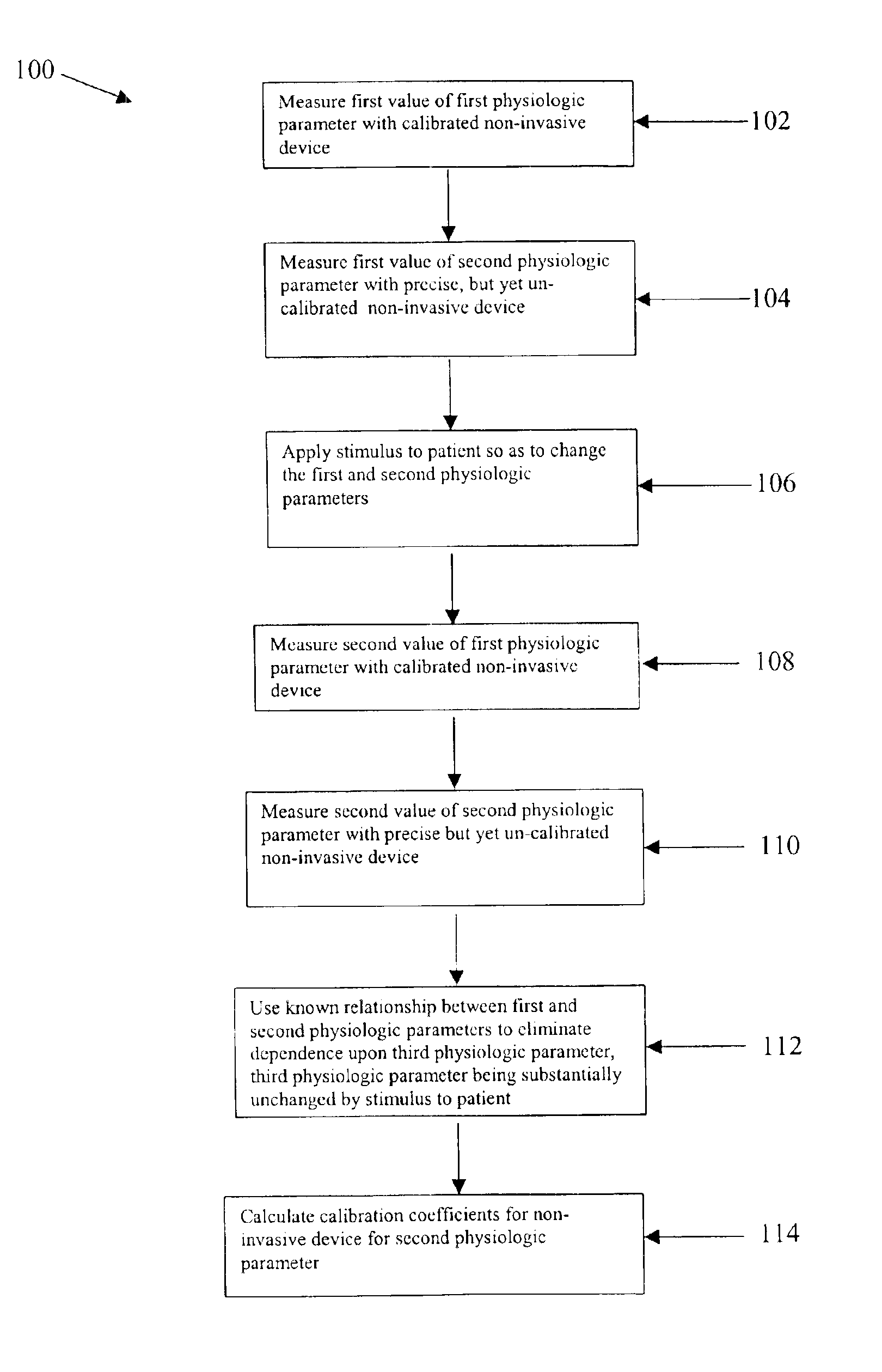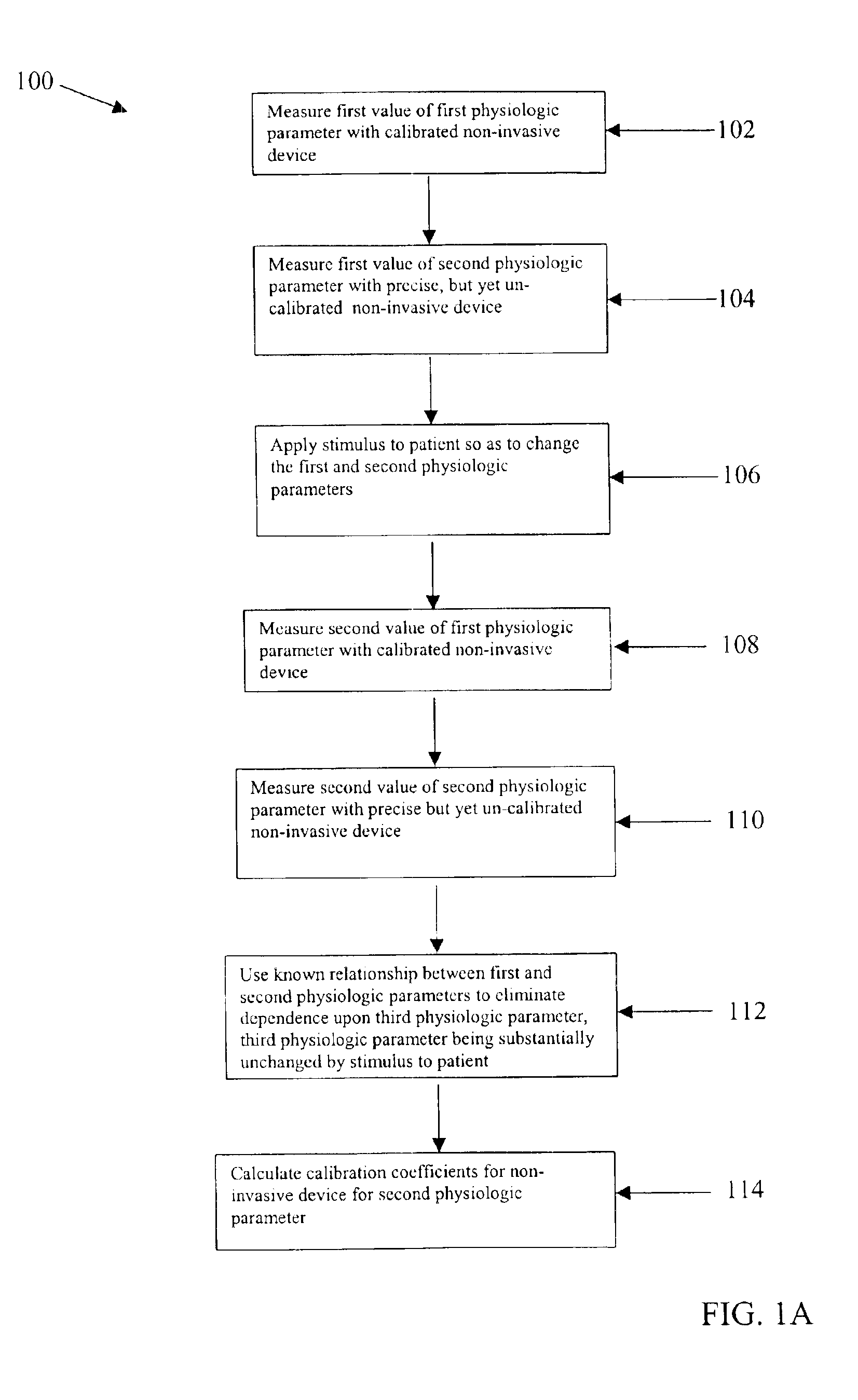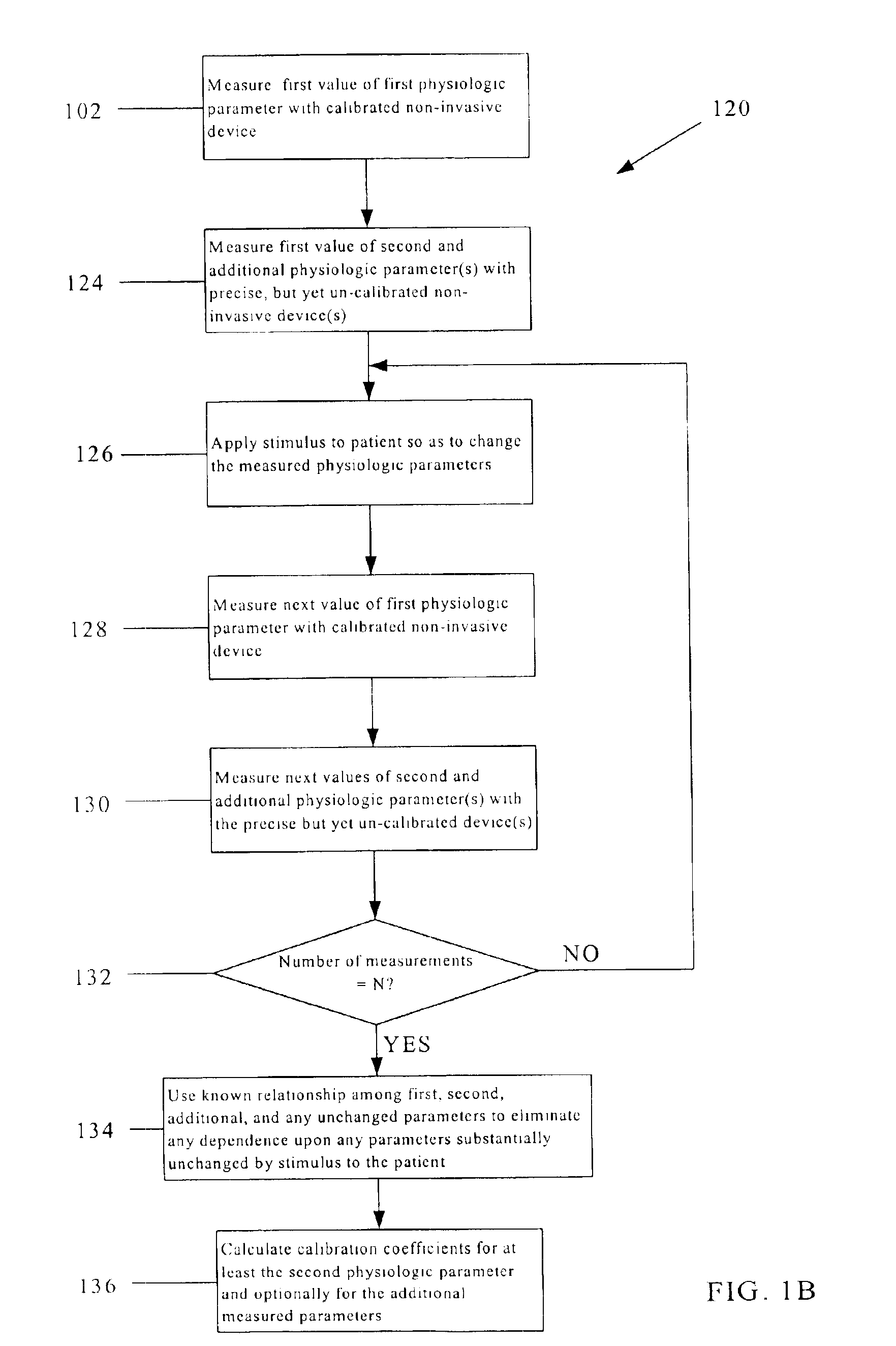Calibration technique for non-invasive medical devices
a non-invasive, medical device technology, applied in the field of medical devices, can solve problems such as life-threatening changes in significant ph from this rang
- Summary
- Abstract
- Description
- Claims
- Application Information
AI Technical Summary
Problems solved by technology
Method used
Image
Examples
Embodiment Construction
The present invention is applicable to medical devices and is believed to be particularly useful for calibrating non-invasive medical devices at the point of care.
According to one embodiment of the invention, a set of calibration coefficients is determined using the known chemical relationship between at least a first physiologic parameter (P1) and a second physiologic parameter (P2), where the physiologic parameters P1 and P2 can be measured non-invasively. For example, P1 and P2 may be related to optical spectra that be measured directly. Also, the technique can accommodate a third physiologic parameter (P3), which may participate in the equilibrium process between physiologic parameters P1 and P2. The measurable signal, S, can be characterized by equation (1), as follows:
S=S(P1, P2, P3) (1)
That is, the measurable signal, S, is a function of the three physiologic parameters P1, P2, and P3. Given this dependence, it may require three independent data points to accurately calibrate...
PUM
| Property | Measurement | Unit |
|---|---|---|
| wavelength range | aaaaa | aaaaa |
| pressure | aaaaa | aaaaa |
| temperature | aaaaa | aaaaa |
Abstract
Description
Claims
Application Information
 Login to View More
Login to View More - R&D
- Intellectual Property
- Life Sciences
- Materials
- Tech Scout
- Unparalleled Data Quality
- Higher Quality Content
- 60% Fewer Hallucinations
Browse by: Latest US Patents, China's latest patents, Technical Efficacy Thesaurus, Application Domain, Technology Topic, Popular Technical Reports.
© 2025 PatSnap. All rights reserved.Legal|Privacy policy|Modern Slavery Act Transparency Statement|Sitemap|About US| Contact US: help@patsnap.com



